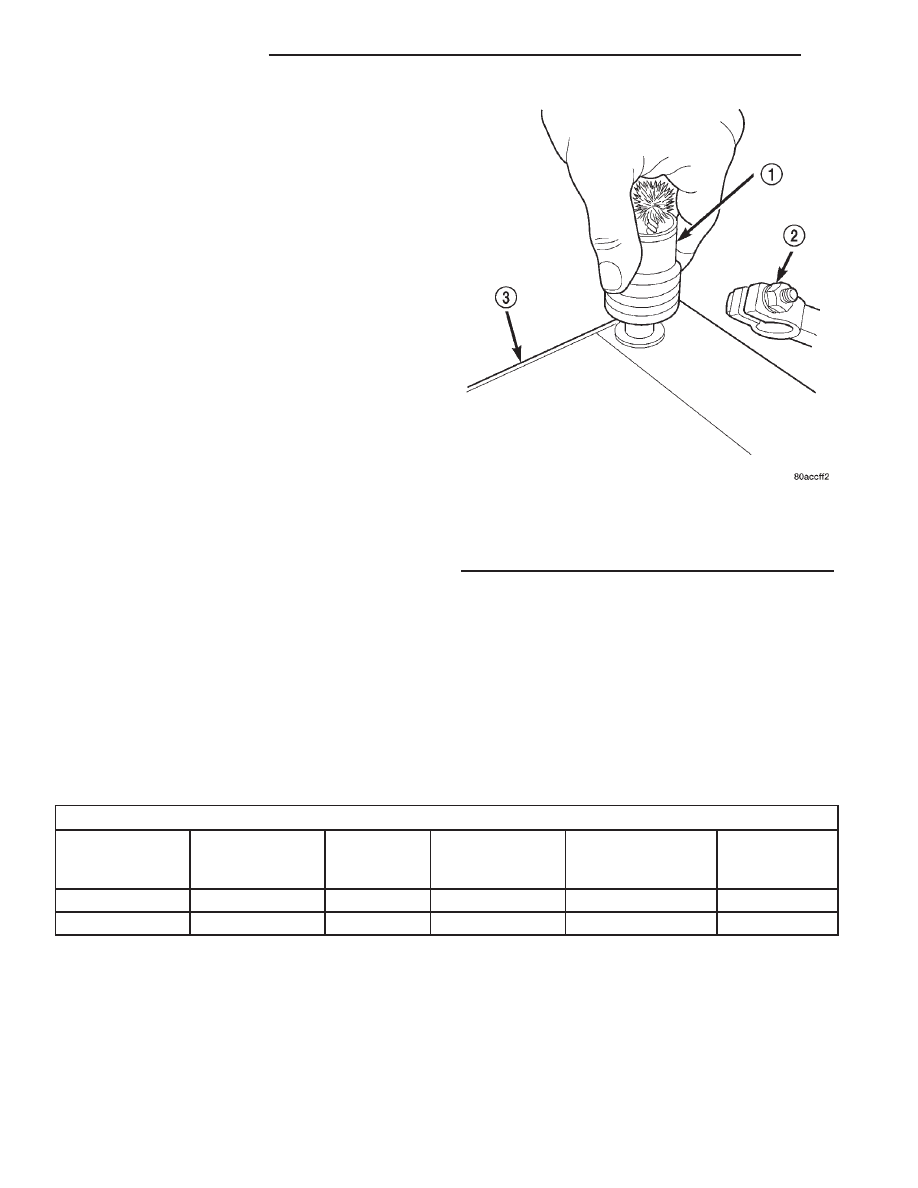Dodge Dakota (R1). Manual - part 296

(4) Clean the battery thermal guard with a sodium
bicarbonate (baking soda) and warm water cleaning
solution using a stiff bristle parts cleaning brush to
remove any acid film.
(5) Clean any corrosion from the battery terminal
posts with a wire brush or a post and terminal
cleaner, and a sodium bicarbonate (baking soda) and
warm water cleaning solution (Fig. 3).
INSPECTION
The following information details the recommended
inspection procedures for the battery and related
components. In addition to the maintenance sched-
ules found in this service manual and the owner’s
manual, it is recommended that these procedures be
performed any time the battery or related compo-
nents must be removed for vehicle service.
(1) Inspect the battery cable terminal clamps for
damage. Replace any battery cable that has a dam-
aged or deformed terminal clamp.
(2) Inspect the battery tray and battery holddown
hardware for damage. Replace any damaged parts.
(3) Slide the thermal guard off of the battery case,
if equipped. Inspect the battery case for cracks or
other damage that could result in electrolyte leaks.
Also, check the battery terminal posts for looseness.
Batteries with damaged cases or loose terminal posts
must be replaced.
(4) Inspect the battery thermal guard for tears,
cracks, deformation or other damage. Replace any
battery thermal guard that has been damaged.
(5) Inspect the battery built-in test indicator sight
glass for an indication of the battery condition. If the
battery is discharged, charge as required. Refer to
Standard Procedures for the proper battery built-in
indicator test procedures. Also refer to Standard Pro-
cedures for the proper battery charging procedures.
SPECIFICATIONS
BATTERY
Battery Classifications and Ratings
Part Number
BCI Group Size
Classification
Cold
Cranking
Amperage
Reserve
Capacity
Ampere-Hours
Load Test
Amperage
56027100
27
600
120 Minutes
66
300
56027302
27
750
150 Minutes
75
375
BATTERY
DESCRIPTION
A large capacity, low-maintenance storage battery
(Fig. 4) is standard factory-installed equipment on
this model. Refer to Battery Specifications for the
proper specifications of the factory-installed batteries
available on this model. Male post type terminals
made of a soft lead material protrude from the top of
the molded plastic battery case to provide the means
for connecting the battery to the vehicle electrical
system. The battery positive terminal post is physi-
cally larger in diameter than the negative terminal
post to ensure proper battery connection. The letters
POS and NEG are also molded into the top of the
battery case adjacent to their respective positive and
negative terminal posts for identification confirma-
Fig. 3 Clean Battery Terminal Post - Typical
1 - TERMINAL BRUSH
2 - BATTERY CABLE
3 - BATTERY
8F - 6
BATTERY SYSTEM
AN
BATTERY SYSTEM (Continued)